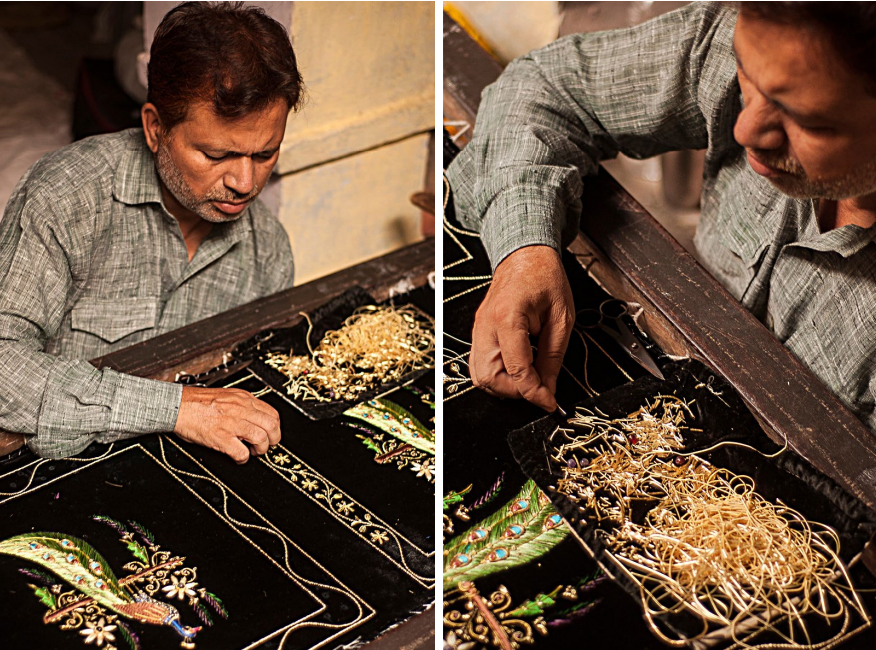Introduction
Zardozi is the traditional and hand-crafted art of decorating cloth with various precious and semi-precious materials. It was patronised by the Nawabs of the Awadh and other royal families. The traditional craft of making zardozi has been passed down in generations and is practised by a few families in Uttar Pradesh. The metallic rich embroidery is also done in parts of New Delhi. In the by-lanes of Old Delhi lies the hub of shops that sell the raw materials that are utilised within the craft. The delicately hand created work is treasured since time immemorial. Today, several families in Varanasi, Agra, Lucknow, Rampur, Bareilly and Farrukhabad have revived this old craft to supply exquisite zari embroidery works.
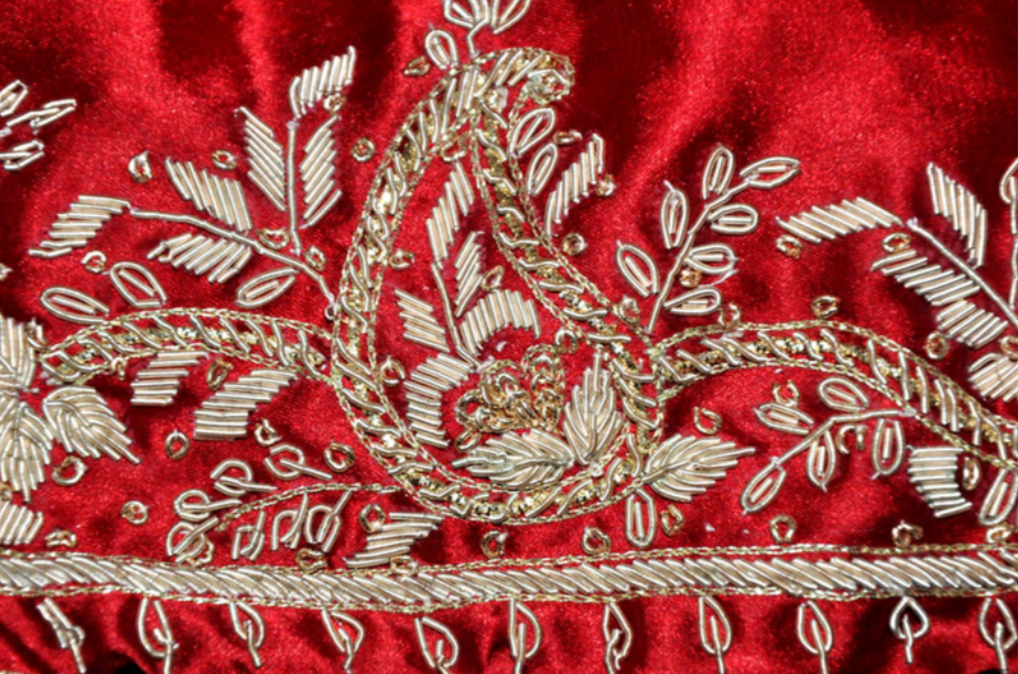
Zardozi embroidery in India refers to the overall zardozi designs and patterns which are embellished on top of fabrics. The Delhi markets are known for their zardozi embroidered suits, zardozi embroidered sarees, and embroidered fabrics. Allahabad is one of the major centres for Zardozi embroidery where many Muslim families are involved within the craft which requires tremendous skill and dexterity. Zardozi embroidery involves the use of both hands of the artisan, one to hold the needle and one to hold the cloth and maneuver.
Tools and Raw Materials Required
Zardozi making requires a wooden frame (an adda) which is adjustable and consists of 4 wooden bars, the cloth that needs embellishment is stretched on the two bars horizontally and locked further in by 2 vertical bars. Next important tool that is used is the needle (an aari)which has a hook at the tip and a wooden handle at the back, the needles are now available with iron or plastic handles depending from artisan to artisan. Raw material made for zardozi embroidery is sourced in bulk from local shops at local markets, like the Kinari bazaar in Delhi where in shops are lined up selling its visitors an array of delicate silver/gold threads and other precious material. A simple plain wire is called Badla, some which are wrapped around the thread are called Kasav while the twisted wire is called Nakshi.
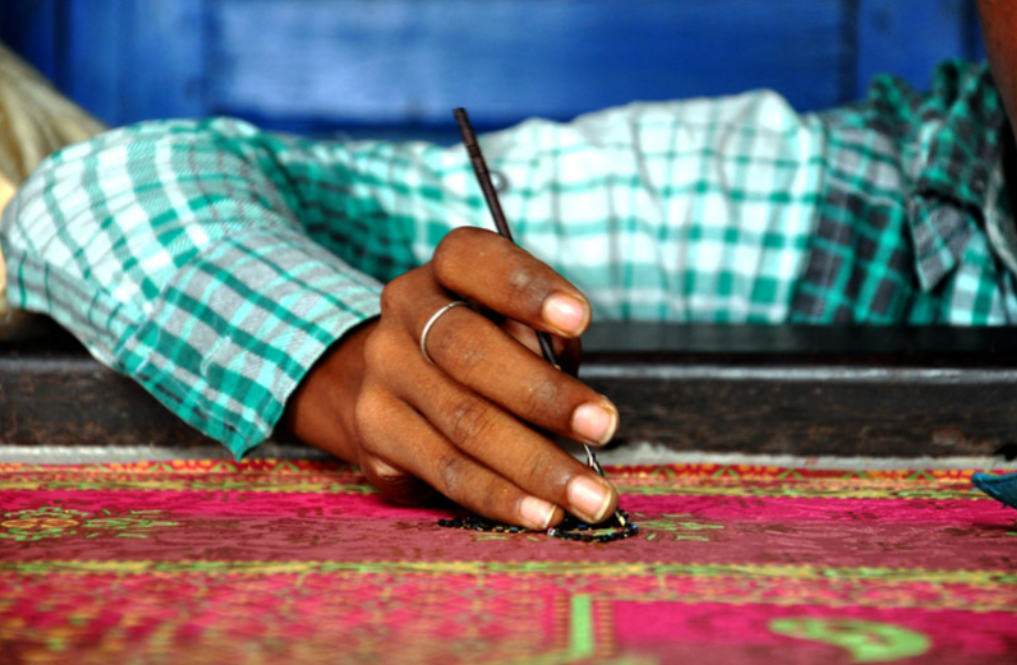
Dabka and Sitara are two embellishments in Zardozi embroidery that are spring-like and cut into small pieces and placed on the cloth. Glass beads with cylindrical structures are called Kardana and spherical ones are called Poot ki Moothi.
Creative Process of Making a Zardozi
As discussed before, it is an energy taking, tedious task to make a zardozi embroidered textile, the process is divided into steps:
- Tracing
- Stretching the Adda
- Embroidery
- Finishing
The zardozi embroidery motifs are traced on a plain cloth, sketched first on a tracing paper or butter paper and the design is poked with a needle to make holes throughout. The tracing sheet is then placed on the cloth and the entire design is traced on to the cloth and the layout is blocked. The tracing happens with the cloth getting dipped with a mixture of chalk powder and kerosene. This process is called chappai. Post this, the adda is set, with one frame getting some 4-6 artisans sitting and embroidering on the side. Then begins the embroiderers journey, the cloth to be embroidered is stitched to a patti (a thick cloth) and the materials are then slowly embroidered within the fabric.
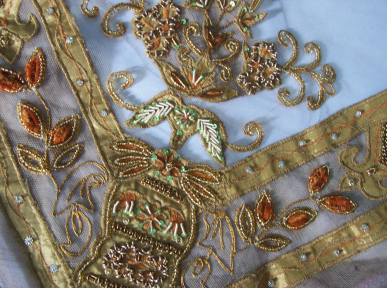
Once the zardozi embroidery is done, the excess threads are cut, the cloth is washed, dried and ironed to perfection and it is ready for sale.
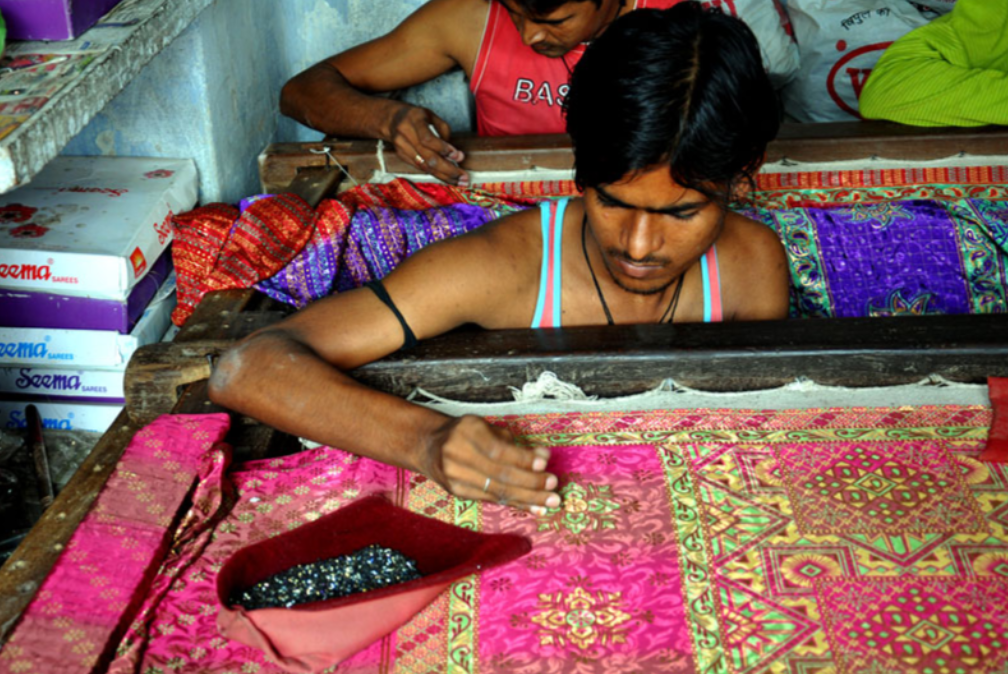
Since this craft traces its origins in aristocracy in the Mughal era, the zardozi embroidery designs are also inspired from that rule and regions. The design comprises unique Islamic floral patterns, geometrical patterns, paisleys, jaalis, etc. Many new designs and motifs entered the world of modern zardozi embroidery over a period of time. Newer motifs such as contemporary designs/motifs – new homes, people, flora and fauna, etc. Zardozi is now even used to embellish products such as purses, belts, handbags, cushion covers, wall hangings, etc. Zari zardozi work has been known for its opulence, many master craftsmen have now exhibited their beautiful creations at international centres and galleries. These master makers have revived a lot of classic and Mughal style of zardozi embroidery, from the choice of colour, to how the garments are cut and the entire design layout.
The glittering garments made with zardozi embroidery are timeless creations which know no shackles of trends. The metallic beauty has its origins also in Vedic literature such as Mahabharata and Ramayana and of course all accounts of the Sultanate period. Our country is known for its use of gold embroidery. The same use of metal embroidery in Indian textiles that are used for ritualistic purposes and for ceremonies. The high art was at a decline post the Mughal period but is known for its richness.

